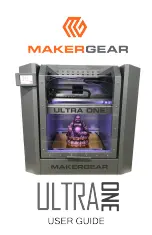
2 – English
SUPPLEMENTAL HEALTH INFORMATION
Acute oral toxicity:
LD50 is greater than 2,000mg/kg.
(This was the highest attainable mass.)
Acute inhalation:
LC50(4H) is in excess of 5.13mg/l.
(This was the highest attainable concentration.)
Eye irritation:
Non-irritant.
Skin irritation:
Non-irritant.
Skin sensitization:
Non-sensitiser.
Mutagenicity:
Negative in the Ames test.
Carcinogenicity:
In 1996, the IARC classified carbon black
as a Group 2B carcinogen (possible human carcinogen).
Chronic Effects:
In a study in rats by chronic inhalation
exposure to a typical toner, a mild to moderate degree of lung
fibrosis was observed in 92 % of the rats in the high
concentration (16 mg/m3)exposure group, and a minimal to
mild degree of fibrosis was noted in 22% of the animals in the
middle (4 mg/m3) exposure group. These findings are
attributed to "lung overloading", a general response to
excessive amounts of any dust retained in the lungs for a
prolonged period.
ECOLOGICAL INFORMATION
Aquatic environment
LC50 is greater than 1000mg/L (fish)
EC50 is greater than 1000mg/L (daphnia)
EbC50 is greater than 1000mg/L (Algal)
(This was the highest attainable mass.)
DISPOSAL CONSIDERATION
Dispose of in accordance with local, state and federal
regulation.
Empty plastic container may be recycled.
TRANSPORTATION INFORMATION
Special Precautions:
None
International Transport Information
UN Classification Number:
Not applicable
Land DOT 49 CFR, ADR:
Not classified as Dangeous Goods
Sea IMDG Code:
Not classified as Dangeous Goods
Air ICAO-TI:
Not classified as Dangeous Goods
REGULATORY INFORMATION
IARC:
See section 11.
US/Canada Information
OSHA Hazard Communication Standard, 29CFR 1910.
1200:
Not regulated.
Toxic Substance Control Act (TSCA):
All chemical
substances in this product comply with all applicable rules
or orders under TSCA.
RCRA (40 CFR 261):
Product or components not listed.
CERCLA/SARA Information:
Not regulated.
NTP Annual Report on Carcinogens:
Not listed as an NTP
carcinogen.
California Proposition 65:
Neither toner, or any of the
components, are listed as chemicals known to the State of
California to cause cancer or reproductive system effects.
Controlled Products Regulations(Canada):
This product has
been classified in accordance with the hazard criteria of the
CPR.
Workplace Hazardous Materials Information
System(Canada):
No toxicology information available
Other State Regulations:
Carbon black is listed in the New
Jersey Right to Know List, Pennsylvania Hazardous
Substance List, and Massachusetts Substance List.
U
.S./Canada Label Statements:
LOW HAZARD FOR
RECOMMENDED HANDLING. Minimize dust generation and
accumulation. Use with adequate ventilation.
EU Information
Label Information According to Directives 67/548
EEC & 1999/45 EC
Symbol & Indication:
Not required
Risk Phrase:
Not required
Safety Advise Phrase:
Not required
76/769/EEC:
All chemical substances in this product
comply with all applicable rules or order under 76/769/EEC.
National requirement:
No specific regulations or
restrictions.
Regulation (EC) No. 1907/2006 (REACH):
All chemical
substances in this product comply with all applicable rules
or order under 1907/2006
OTHER INFORMATION
National Fire Protection Association (NFPA)
Classification:
Flammability:
1
Reactivity:
0
Health:
0
(0 = insignificant, 1 = slight )
Hazardous Materials Information Systems (HMIS):
Red (Flammability):
1
Yellow (Reactivity):
0
Blue (Acute Effects):
0
(0 = insignificant, 1 = slight )
Notice:
Judgments as to the suitability of information herein
for purchaser's purposes are necessarily purchaser's
responsibility. Therefore, although reasonable care has been
taken in the preparation of such information, Toshiba
Corporation extends no warranties, makes no representations,
and assumes no responsibility as to the accuracy or suitability
of such information for application to purchaser's intended
purposes or for consequences of its use.
References:
IARC (1996) IARC Monographs on the
Evaluation of the Carcinogenic Risks of Chemicals to Humans,
Vol. 65, Printing Processes and Printing Inks, Carbon Black
and Some Nitro Compounds, Lyon, pp. 149-261.
H. Muhle, B. Bellmann, O. Creutzenberg, C. Dasenbrock, H.
Ernst, R. Kilpper, J. C. MacKenzie, P. Morrow, U. Mohr, S.
Takenaka, and R. Mermelstein (1991).
Pulmonary Response to Toner upon Chronic Inhalation
Exposure in Rats, Fundamental and Applied Toxicology 17, pp.
280-299.
Abbreviation:
(1) OSHA PEL stands for Permissible Exposure Limit under
Occupational Safety and Health Administration (USA).
(2) ACGIH TLV stands for Threshold Limit Value under
American Conference of Governmental Industrial Hygienists
(USA).
(3) DFG-MAK stands for Maximale
Arbeitsplatzkonzentrationen under Deutsche
Forschungsgemeinschaft.
(4) TWA stands for Time Weighted Average.
(5) IARC stands for International Agency for Research on
Cancer.
(6) NTP stands for National Toxicology Program (USA).
(7) NIOSH stands for National Institute for Occupational
Safety and Health (USA).
(8) DOT stands for Department of Transportation (USA).
(9) NOHSC stands for National Occupational Heath and Safety
Commission (Australia).
User’s Responsibility ____________
This bulletin cannot cover all possible situations which the
user may experience when using this product. Each aspect
of your operation must be examined in regard to if, or
where, additional precautions may be necessary. All
health and safety information contained in this bulletin
must be provided to your employees or customers. It is






























